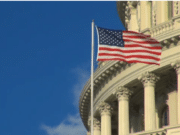In the Commerce Department’s monthly retail sales report Wednesday, families nationwide evidently spent more money on items like automobiles and other commodities in October. The figures climbed more from the previous month than analysts anticipated. This suggests that consumer spending started gaining momentum early in the fourth quarter, which could genuinely strengthen the economy in the long run. There were also indications of a slowing in inflation, giving rise to optimism that in 2023, the economy may either avoid a recession or only endure a slight decline.
While industrial production barely increased in October, production of commercial equipment was robust. The Federal Reserve will continue tightening monetary policy if consumer and corporate spending remain high. Still, falling inflation would allow the Fed to reduce the magnitude of rate hikes. Eugenio Aleman, a highly-regarded economist, noted, “This is not what the Fed wants to see, but it comes at a time when inflation numbers are starting to improve. This will keep the Fed on guard and committed to continue to increase rates in order to slow down economic activity.”
What are the retail sales figures for October, and what are the key indications? What is the latest from the Fed regarding their outlook on interest rates? Learn more in the full article here:
After no movement in September’s report, retail sales increased by 1.3% last month, which can be considered an accomplishment against the consensus projection of 1.0%. In October, sales rose by 8.3% compared to 2021. Most retail sales are of material goods and therefore are not inflation-adjusted. According to experts’ estimates, actual retail sales rose by 0.9% in October. These results are still significant and seem to coincide with a decline in inflation.
Sales in October were probably supported by the one-time tax credits in California, where some homeowners collected up to $1,050 in stimulus payments. Also noteworthy is that Amazon (AMZN) ran an additional Prime Day special. Motor vehicles accounted for most of the wide gain in sales in October, with auto dealer receipts regaining 1.3%, suggesting notable supply improvements.
Higher gas prices also helped boost sales; service station receipts increased by 4.1%.
Retail sales online increased by 1.2%. Sales at furniture retailers rose 1.1%. The sole services segment in the retail sales report – food and beverage sales – saw a rise of 1.6%. However, sales at appliance and electronics stores fell by 0.3%. Along with athletic goods, hobby, music, and book businesses, general retail stores also saw minor revenue falls. Sales at clothing retailers remained unchanged. The National Retail Federation predicts that this year’s Christmas sales will increase between 6% and 8%. Even while there would be a decrease from the 13.5% achieved in 2021, it would still be much higher than the average of 4.9% over the previous ten years.
Ahead of the customary holiday shopping season, retailers offer discounts, and some analysts forecast lower consumer spending later in the year if October’s robust sales persist. According to Walmart (WMT)’s figures, comparable U.S. sales increased from the same period last year. As big-ticket purchases increased and more people decided to improve their homes rather than move due to rising loan rates, Home Depot (HD) also recorded higher comparative sales for the same period.
Credit should likely also be given to what I’d call an increasingly hardened financial culture in the U.S. For example, consumers have typically been able to withstand increasing prices and borrowing rates thanks to the enormous savings many of those amassed during the pandemic— not to mention fewer chances to spend and the significant salary increases, representing a more competitive job market. It’s certainly welcome news that despite many recent layoffs in the tech industry, there are still plenty of jobs.
There are still concerns, however, that as we move into 2023, tighter monetary policy could reduce overall demand and drag down both the labor market and the broader economy. It’s believed that low-income households have likely worn through whatever savings or reserves they had. The third quarter saw a $351 billion increase in overall borrowing, according to data released by the New York Fed on Monday. Although analysts anticipate a minimal impact, the rising debt burden might be a barrier to consumption.
After weakening during the first half of 2021, the overall economy has expanded at a 2.6% annual pace in the third quarter, which has come with its share of surprises. According to separate data from the Commerce Department, business inventories increased by 0.4% in September. And according to a different Fed estimate, manufacturing production increased by 0.1% in October, while the output of commercial equipment increased by 0.8%.
The Fed has been tackling inflation by implementing the fastest indefinite rate-hiking process since the 1980s. It has so far increased its benchmark rate this year by 375 basis points, or 3.75%. In recent weeks though, most Fed officials have been expressing a positive outlook, anticipating a lower rate hike at its December meeting. There was an outlier in Fed Governor Christopher Waller, who seemed to insist otherwise. Recent remarks from Waller, however, show a change in sentiment. At an event in Phoenix, he said, “Looking toward the FOMC’s December meeting, the data of the past few weeks have made me more comfortable considering stepping down to a 50-basis-point hike.”
Paul Ashworth, the chief North American economist at Capital Economics, summed things up well when he said, “We could be in for a ‘soft landing’ after all.”
Read Next – Beware the morning of November 25, 2022..
Mark your calendar for Friday, Nov 25
America is in crisis….
Soaring inflation… Surging unemployment… millions living in poverty.
Now, the media would like you to believe that it is the government causing this problem…
A failure in leadership.
They couldn’t be more wrong.
My name is Louis Navellier – and I’m a member of America’s 1%.
I have my own money management firm – one where I manage money for some of America’s wealthiest folks.
And I’ve isolated a dozen 10,000% winners during my time as a professional trader.
But today I’m breaking ranks with America’s elite to issue this urgent message.
I want to show you why this Friday, Nov 25 is a date many people on my side of the wealth divide are looking forward to, and why I believe it could be a very big day for you too.
You see, all of America’s current problems can be traced to a single economic phenomenon.
One so powerful that it can send certain stocks soaring.
Folks who take advantage of this economic opportunity today could see wealth beyond their wildest dreams.
While those who ignore it will get stuck on the wrong side of the wealth gap…
Their retirements decimated.
And thanks to the media, 99% of Americans are unaware of this huge economic event.
They are living in delusion.
These folks… will be blindsided….
And that’s why I’m releasing this free presentation.
I want to help everyday folks profit from this huge economic event… and I’m going to show you how.
Just click here to learn how you can get started today.
I’m urging you – don’t stay in the dark.
Don’t let the media lead your portfolio to slaughter.
This is your chance to take your financial future into your own hands.
And all you need to do is click here.













